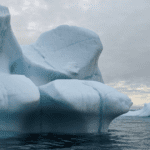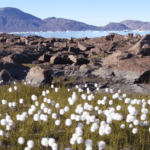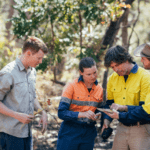In her latest book, Citizen Scientist: Searching for Heroes and Hope in an Age of Extinction, Mary Ellen Hannibal picks up where Elizabeth Kolbert left off in The Sixth Extinction: An Unnatural History.
Kolbert’s book outlined how scientists came to the conclusion that Earth had experienced five major mass extinction events, with the first just over 400 million years ago. These events have been attributed variously to major shifts in the Earth system such as ice ages, algal blooms, increased greenhouse gases, and the asteroid impact at Chicxulub Crater.
However, the current mass extinction crisis—the sixth extinction—is placed squarely on the shoulders of humans. We’re changing climate, reducing habitat, spreading invasive species …the list goes on. Indeed, given the rate at which species are currently going extinct, we may reach an ecological tipping point beyond which ecosystems will begin to behave differently due to species loss.
Hannibal kicks off her book by outlining what the sixth extinction looks like for the specific geographic area she’s focused on: California. She mentions changes in vegetation after settlers effectively stopped Indigenous peoples’ use of fire in the landscape, dying sea stars due to wasting diseases and changes in ocean conditions, declines in the populations of top predators that have destabilized both terrestrial (think wolf and grizzly) and marine (think otters and whales) food webs, and more.
However, rather than despair at the evidence of extinction all around us, Hannibal looks for the positive. She focuses on citizen science as a way to get a handle on this sixth extinction, to engage the public in understanding and helping solve this problem, and to link scientists with the public in a way that works to build society and democracy. While I’ve written about citizen science previously, Hannibal is the first to get at the ideological and aspirational components of a citizenry involved in science.
“Citizen science is not only about collecting data; it’s about making a bridge between nature’s drama and people like me. The hopeful sense is that if people like me observe what’s happening up close and personal, and start to see patterns, then we will all be galvanized to do more to help nature.”
Citizen science is not a new pursuit. In fact, Hannibal identifies historical citizen scientists from Charles Darwin to Alexander von Humboldt, from Thomas Jefferson to Meriwether Lewis and William Clark, the California botanists Alice Eastwood and John Thomas Howell, and well-known conservationists Ed Ricketts and John Steinbeck.
Hannibal sees today’s citizen scientists as a group that can document ongoing extinctions and perhaps gain the knowledge required to reduce extinction rates through conservation efforts. By going behind the scenes at a number of organizations (e.g., Google Earth Outreach, the California Academy of Sciences, Save the Redwoods League), Hannibal not only shows us how many citizen science programs are out there and how many people are involved, but also provides somewhat of a roadmap for creating a successful citizen science project.
While Hannibal is a great writer, the book itself is somewhat unwieldy, and it’s difficult to find the narrative thread that ties the book together. Even though Hannibal has limited herself to a fairly small geographic area, and to citizen science in the life sciences in particular, there’s still so much information—from natural history to scientific history plus what’s happening in the present day—that it’s hard to synthesize it all in one book. The inclusion of the death of her father is also difficult to reconcile with the rest of the book, though Hannibal clearly sees parallels between his death and her citizen science work: “not only has my father disappeared, life itself would seem to be disappearing.”
To make the most of the book, therefore, I’ve decided to focus on key things we can learn about citizen science, from how to make the data collected useable to how to keep volunteers engaged. For researchers interested in getting involved in citizen science, it’s good to know what you’re getting into, as evidenced by this tweet:




